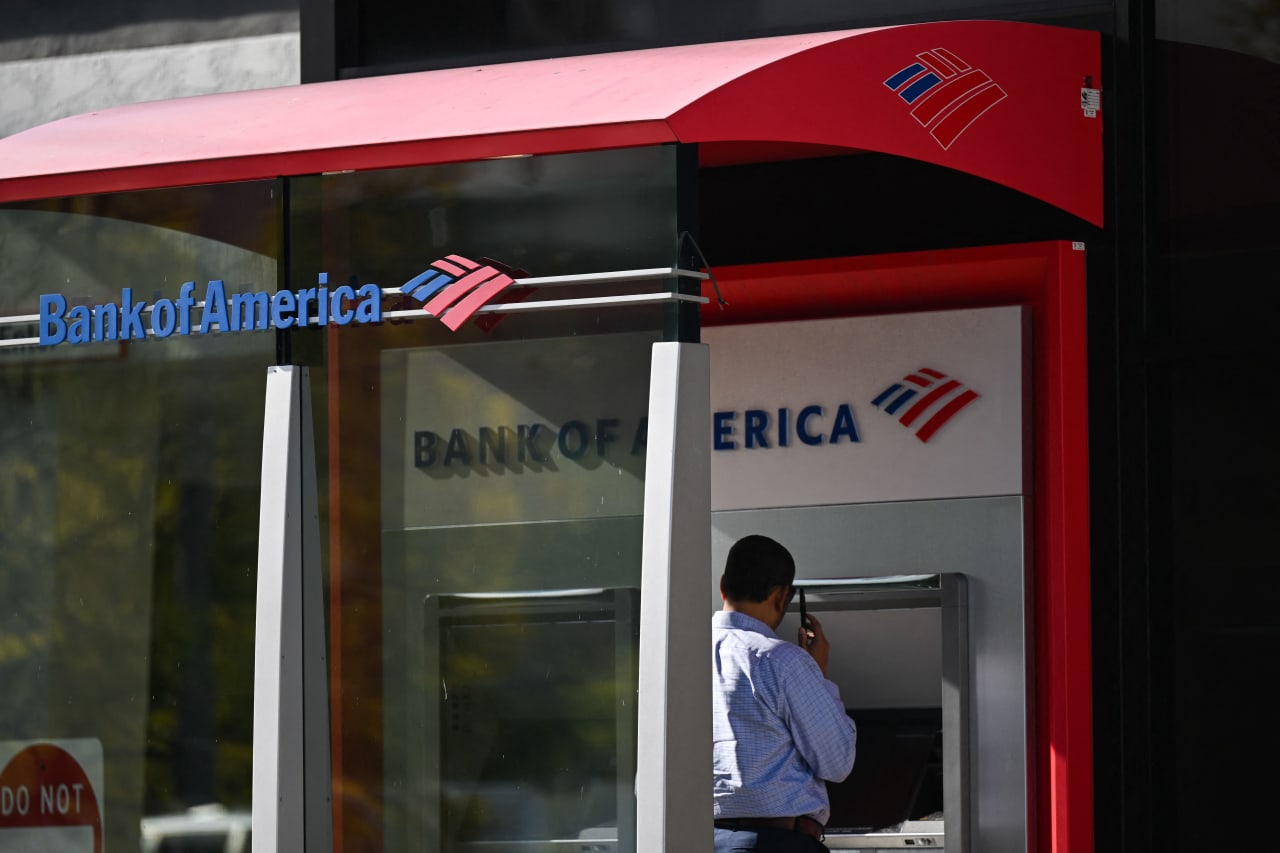Worried About a Stock-Market Correction? Here’s How to Lock in Recent Gains
The best course when stocks slide is for investors to stand pat, but ‘put’ options are one way to hedge against a drop and lock in some profits
The past five years have been good to stock-market investors. The S&P 500 index has climbed an annualised 12% during that period, outstripping the 9% annualised gain over the past 40 years. This year alone the index is up 6.9% as of April 26, tacking on to the 24% gain in 2023.
But signs are emerging that the stock market could be due for a breather. As of April 25, the S&P 500 went 133 trading days without a decline of at least 10%, according to PNC Institutional Asset Management. To be sure, that’s still short of the 172-day average since 1928. But the S&P 500 has jumped 24% in the past six months (about 180 days), which buttresses arguments for a correction.
What’s more, the multiyear ascent has arguably sent stocks to overvalued levels. The S&P 500’s forward price-to-earnings ratio—a gauge of market valuation based on earnings estimates for the next 12 months—registered 20 as of April 26, exceeding the five-year average of 19.1 and the 10-year average of 17.8, according to FactSet.
“A correction is certainly possible,” says Jack Ablin , chief investment officer at wealth-management firm Cresset Capital, pointing to the high valuations and the prospect that rate cuts will come later than expected thanks to inflation that has been higher than expected.
Given the danger of a stock-market correction, commonly defined as a 10% to 20% drop, how can investors guard the profits they have made in recent years?
Wait and see
Assuming you have a well-diversified portfolio and aren’t counting on the money from your stocks to finance an imminent expense, financial advisers say the best strategy is to hang tight.
Corrections generally don’t stick around long. Since 1985, declines between 10% and 20% for the S&P 500 have lasted only 97 days on average—three-plus months—according to a CFRA analysis of S&P data.
It then has taken the market an additional 101 days on average to recover the ground lost during the correction. So in about six months, investors tend to be back where they were before the correction.
“If there’s a shallow correction of 5% to 10%, we recommend riding it out,” says Karim Ahamed , an investment adviser at wealth-management firm Cerity Partners. “Eventually the market recovers. The idea of selling out and climbing back in is difficult to achieve. You’re more likely to stay on the sidelines with your losses crystallising.”
The S&P 500 did fall more than 5% in recent weeks, from March 28 to April 19.
Sell losers
Some people, though, simply find it impossible to do nothing if they fear a correction is looming. At the least, they want to protect the gains they have earned so far. What’s the most prudent way for them to reduce their market exposure?
Keep in mind that most actions you can take to guard your stock profits carry a cost. The easiest method, selling stocks, subjects you to capital-gains taxes unless you are selling from a tax-advantaged retirement account. That tax rate varies according to your income, but will likely be 15%.
One way to limit the burden is through tax-loss harvesting, says Amanda Agati , chief investment officer of PNC’s asset-management group. That is when you sell stocks at a loss, lowering your net capital gain. If you have any dogs in your portfolio—stocks with poor fundamentals—you can unload those.
If you do sell stocks, you could put the proceeds into a money-market fund for now, financial pros say. Many such funds yield 5% or more, far higher than rates over the past 15 years. Or if you want to increase the safety of your overall portfolio, you could put the money into safe government bonds. Three-year Treasury notes yield around 4.75%.
Play defence
If you are going to unload stocks, but don’t want to sell right away, you can put in a stop-limit sell order through your brokerage. That order can automatically sell your shares if they slide to a level you designate (they can go below it, too), protecting you from big drops.
Say you bought 100 shares of Tesla at $140, and they are now trading at $165. If you don’t want your profit to disappear in a downturn, you could enter a stop-limit sell order with your brokerage at $150 for some or all of your shares. Those shares can be sold if the price reaches $150, securing some of the gains.
You also might shift your holdings more toward defensive stocks, such as utilities and consumer-staple companies, which generally outperform during market downturns, says Michael Sheldon , executive director of wealth-management firm RDM Financial Group.
PNC’s Agati suggests an emphasis on quality stocks, those with high recurring revenues, strong and dependable profit margins, high cash flow and low debt. These stocks—such as AutoZone and Visa , she says—have lagged behind the leaders of the market’s surge over the past year.
Consider options
Advisers also suggest looking at “put” options to protect your stock gains. Puts give you the right but not the obligation to sell a security at a preset price by a preset deadline.
Note that we’re talking about a risk-reduction approach here, not the kind of risk-taking—to try to amplify returns— that has been rampant in the options market . The simplest strategy could be to purchase a put option on a market-index exchange-traded fund, such as one based on the S&P 500. You could buy puts on individual stocks rather than an index ETF, but that may get expensive and complicated as each option carries a purchase premium.
Here’s how the ETF strategy would work: First, buy an option that would let you sell the ETF at a price below the current one, protecting you from declines beneath that level. You wouldn’t have to sell the ETF, and you wouldn’t even have to own it. As the S&P 500 falls, the put option gains in value, and you can sell it.
Say on April 16 you wanted to protect 100 shares of SPDR S&P 500 ETF Trust (SPY) from a decline of more than 10%. With the ETF trading at $505 a share, you could buy an option that covers 100 shares for $1,050, or $10.50 a share. You’re paying a premium equal to 2% of your position.
The option’s expiration date is December, and its strike price is $455 a share, or 10% below the current value. The strike price is the price at which you could exercise the option. But generally you sell the option rather than exercising it, so you don’t have to dump any shares, especially if you don’t own them.
If the market doesn’t go down 10% by December, you let the option expire worthless, and you’re out the $1,050 you paid for it. If the market drops more than 10%, you can sell your option at a profit whenever you want until December.
While it might be more lucrative to sell it early, Ablin recommends holding until expiration if you’re using the option to protect your portfolio. “Think of it like homeowner insurance,” he says. “You pay a premium, like a deductible for insurance, and your coverage runs for a term.”
Keeping the option until expiration extends your coverage for the longest possible period.
By using options, you don’t have to sell any of your stocks, which are typically the best asset to generate strong long-term returns. “If you have the wherewithal to hold the S&P 500 for 10 years, your odds of making money are over 90%,” Ablin says.
 Copyright 2020, Dow Jones & Company, Inc. All Rights Reserved Worldwide. LEARN MORE
Copyright 2020, Dow Jones & Company, Inc. All Rights Reserved Worldwide. LEARN MORE
This stylish family home combines a classic palette and finishes with a flexible floorplan
Just 55 minutes from Sydney, make this your creative getaway located in the majestic Hawkesbury region.
When will Berkshire Hathaway stop selling Bank of America stock?
Berkshire began liquidating its big stake in the banking company in mid-July—and has already unloaded about 15% of its interest. The selling has been fairly aggressive and has totaled about $6 billion. (Berkshire still holds 883 million shares, an 11.3% interest worth $35 billion based on its most recent filing on Aug. 30.)
The selling has prompted speculation about when CEO Warren Buffett, who oversees Berkshire’s $300 billion equity portfolio, will stop. The sales have depressed Bank of America stock, which has underperformed peers since Berkshire began its sell program. The stock closed down 0.9% Thursday at $40.14.
It’s possible that Berkshire will stop selling when the stake drops to 700 million shares. Taxes and history would be the reasons why.
Berkshire accumulated its Bank of America stake in two stages—and at vastly different prices. Berkshire’s initial stake came in 2017 , when it swapped $5 billion of Bank of America preferred stock for 700 million shares of common stock via warrants it received as part of the original preferred investment in 2011.
Berkshire got a sweet deal in that 2011 transaction. At the time, Bank of America was looking for a Buffett imprimatur—and the bank’s stock price was weak and under $10 a share.
Berkshire paid about $7 a share for that initial stake of 700 million common shares. The rest of the Berkshire stake, more than 300 million shares, was mostly purchased in 2018 at around $30 a share.
With Bank of America stock currently trading around $40, Berkshire faces a high tax burden from selling shares from the original stake of 700 million shares, given the low cost basis, and a much lighter tax hit from unloading the rest. Berkshire is subject to corporate taxes—an estimated 25% including local taxes—on gains on any sales of stock. The tax bite is stark.
Berkshire might own $2 to $3 a share in taxes on sales of high-cost stock and $8 a share on low-cost stock purchased for $7 a share.
New York tax expert Robert Willens says corporations, like individuals, can specify the particular lots when they sell stock with multiple cost levels.
“If stock is held in the custody of a broker, an adequate identification is made if the taxpayer specifies to the broker having custody of the stock the particular stock to be sold and, within a reasonable time thereafter, confirmation of such specification is set forth in a written document from the broker,” Willens told Barron’s in an email.
He assumes that Berkshire will identify the high-cost Bank of America stock for the recent sales to minimize its tax liability.
If sellers don’t specify, they generally are subject to “first in, first out,” or FIFO, accounting, meaning that the stock bought first would be subject to any tax on gains.
Buffett tends to be tax-averse—and that may prompt him to keep the original stake of 700 million shares. He could also mull any loyalty he may feel toward Bank of America CEO Brian Moynihan , whom Buffett has praised in the past.
Another reason for Berkshire to hold Bank of America is that it’s the company’s only big equity holding among traditional banks after selling shares of U.S. Bancorp , Bank of New York Mellon , JPMorgan Chase , and Wells Fargo in recent years.
Buffett, however, often eliminates stock holdings after he begins selling them down, as he did with the other bank stocks. Berkshire does retain a smaller stake of about $3 billion in Citigroup.
There could be a new filing on sales of Bank of America stock by Berkshire on Thursday evening. It has been three business days since the last one.
Berkshire must file within two business days of any sales of Bank of America stock since it owns more than 10%. The conglomerate will need to get its stake under about 777 million shares, about 100 million below the current level, before it can avoid the two-day filing rule.
It should be said that taxes haven’t deterred Buffett from selling over half of Berkshire’s stake in Apple this year—an estimated $85 billion or more of stock. Barron’s has estimated that Berkshire may owe $15 billion on the bulk of the sales that occurred in the second quarter.
Berkshire now holds 400 million shares of Apple and Barron’s has argued that Buffett may be finished reducing the Apple stake at that round number, which is the same number of shares that Berkshire has held in Coca-Cola for more than two decades.
Buffett may like round numbers—and 700 million could be just the right figure for Bank of America.
This stylish family home combines a classic palette and finishes with a flexible floorplan
Just 55 minutes from Sydney, make this your creative getaway located in the majestic Hawkesbury region.






















